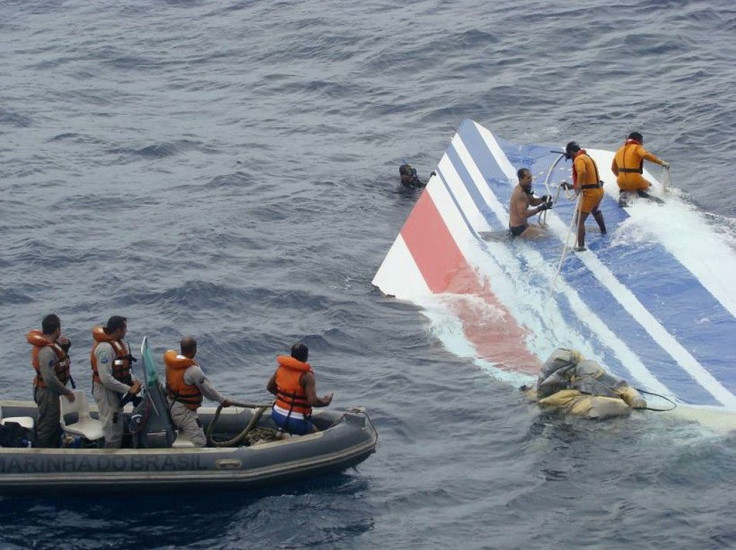Air France crash probe finds pilots ignored warnings

Pilots of a doomed Air France jet which crashed into the Atlantic two years ago killing all 228 people onboard ignored stall warnings and appeared to defy the manual, a new crash investigation report showed on Friday.
The inquiry by France's BEA air accident investigator into the final minutes of flight AF447 found pilots lacked training to handle the freezing of speed sensors and failed to discuss stall alarms as the Airbus jet plummeted 38,000 feet, slamming into the ocean at 200 km (125 miles) per hour.
The BEA issued 10 safety recommendations aimed at avoiding a repeat of the crash, in particular better training for pilots to fly aircraft manually -- a skill industry critics say has been eroded by computerised flight.
Though investigators stopped short of explicitly blaming either the crew or the aircraft and its systems, their report confirmed a finding in May that the pilots responded to stall warnings by doing something that has mystified aviation experts ever since -- pointing the nose up instead of down.
An aerodynamic stall -- not to be confused with stalled engines -- occurs when an aircraft's wings are unable to support it and the textbook way of responding is to point the nose downwards to capture air at a better angle.
"The situation was salvageable," BEA Director Jean-Paul Troadec told a news conference when asked if the crew could have righted the aircraft after its speed sensors froze.
He announced the creation of a panel of experts, including psychologists and aviation experts, to study why the pilots reacted as they did. A final report is due later this year.
Friday's interim report, based on detailed study of black boxes recovered from the ocean floor, revealed passengers were not given any warning as pilots struggled to control the plane amid turbulence in the early hours of June 1, 2009.
The report stoked simmering tensions between the heavyweights of France's aviation industry, Air France and EADS unit Airbus, over whether the airlines' pilots or faulty flight equipment were most to blame for the disaster.
"At this stage, there is no reason to question the crew's technical skills," Air France said in a statement, blaming the "misleading stopping and starting of the stall warning alarm" for confusing pilots with a blizzard of information.
Aviation experts, however, said the evidence so far left little room for doubt the pilots failed to react correctly.
"It seems obvious the crew didn't recognise the situation they were in, for whatever reason, and more training could have helped," said Paul Hayes, safety director at UK consultancy Ascend Aviation.
LAWSUITS MAY FOLLOW
Airbus, which insists its planes are safe, welcomed the report and said the whole air transport community could benefit from the lessons to be learnt from the crash.
The question of who is to blame is of huge importance as both firms face criminal probes in France. Victims families have laid the foundation for lawsuits on both sides of the Atlantic.
During normal computer-assisted flying, Airbus systems are designed to prevent a stall developing even if the pilot errs.
But in this case the A330 was being flown manually after the autopilot switched itself off in the wake of a temporary loss of reliable speed data, thought to be caused by ice on the Pitot speed sensors made by French aerospace firm Thales.
The pilots had not been trained on a procedure known as "Unreliable IAS (indicated airspeed)" or on manual aircraft handling at high altitudes, the BEA said in a statement.
Black box data suggested a 32-year-old junior pilot flying when the incident began, pulled back on the stick despite a series of stall warnings, including one lasting 54 seconds.
A lawyer for some victims' families, however, said the BEA's emphasis on the role of the pilots was "very questionable" and without equipment failure the situation would never arisen.
"This is perhaps a way of BEA freeing the firms from their responsibility," Olivier Morrice told Reuters.
"Stall, stall"
The plane's 52-year-old captain had started a routine rest period when the incident occurred, having left without giving clear operational instructions, the BEA said.
By the time he returned to the cockpit a minute and a half into the emergency, the aircraft was unable to calculate its angle and therefore the stall warning had stopped. When the pilots took correct action, the alarms went off again.
France's SNPL airline pilots' union said this behaviour by the alarm misled the crew. It said the combination of the failure of speed sensors, disconnection of autopilot and breakdown of stalling protection systems was a totally new situation for which the manufacturer had not planned training.
"It is not possible to say it was human error. It is too narrow to say it was the fault of the pilots," said Air France Chief Pilot Eric Schramm, adding the crew may have thought they were flying too fast, a situation which would have called for the stick movements they made.
Pilots say an Airbus stall warning consists of a synthetic voice crying "stall, stall," an alarm nicknamed the "cavalry charge," and a red master warning light on the instrument panel.
The BEA report proposed adding an extra instrument to reinforce audible stall alerts and called for black boxes to record a video image of what pilots see on the computer screens that nowadays replace a forest of dials, although unions fear this could be misused.
© Copyright Thomson Reuters 2024. All rights reserved.











